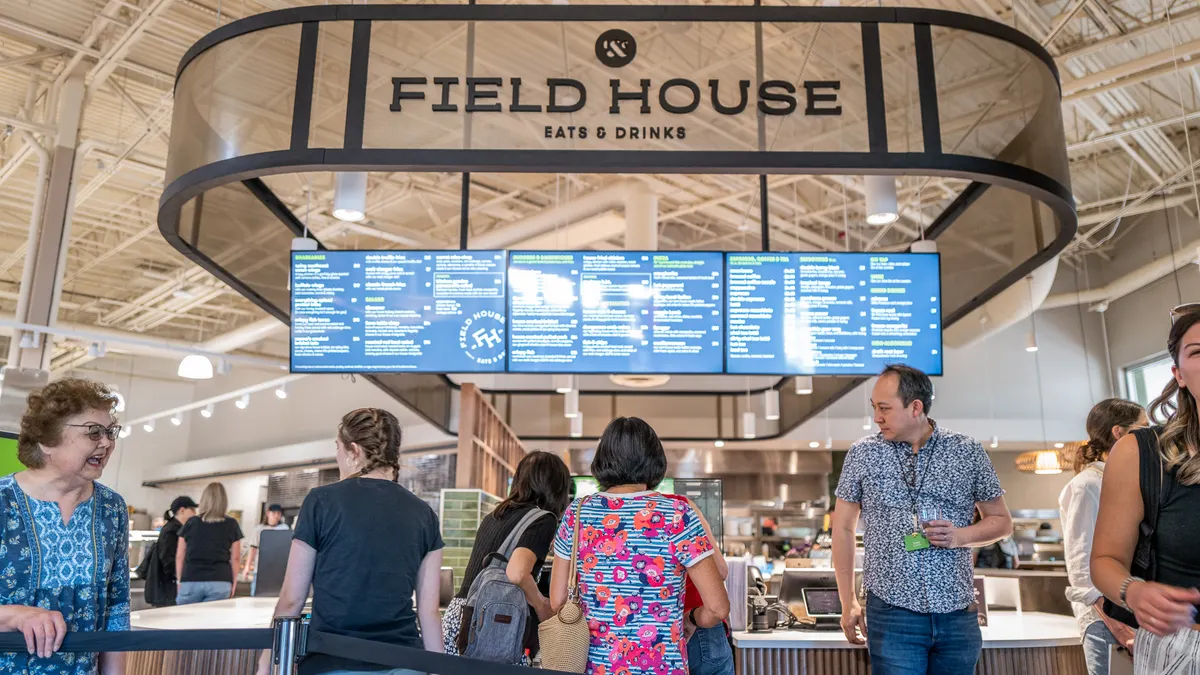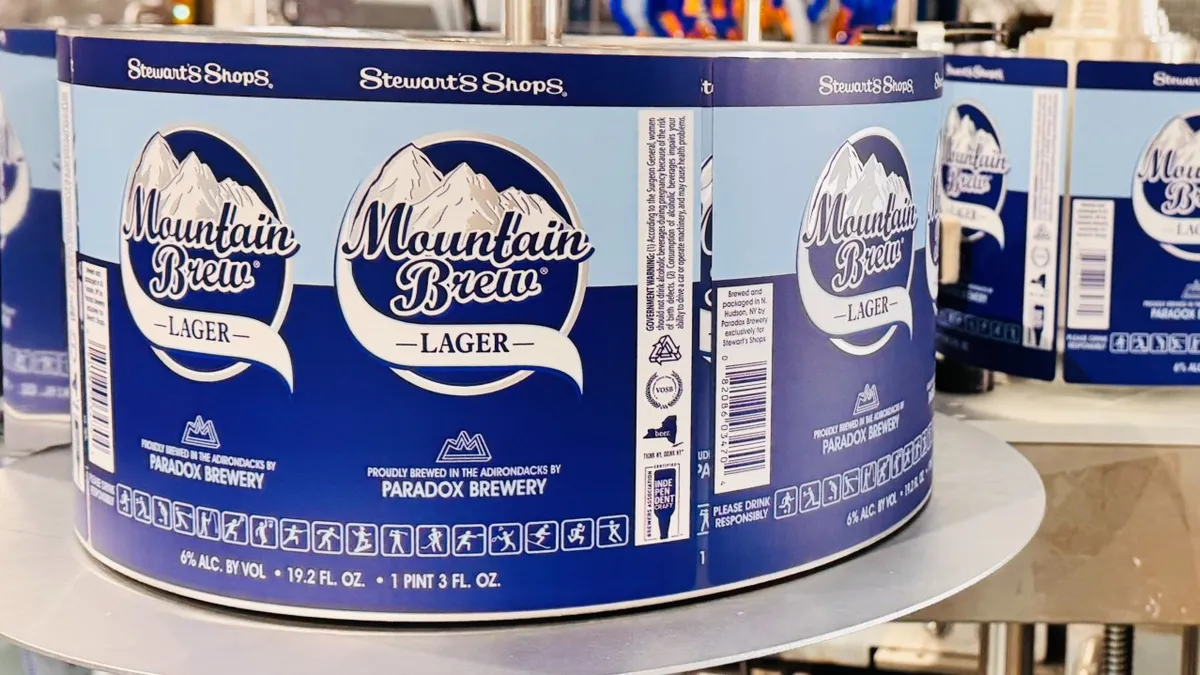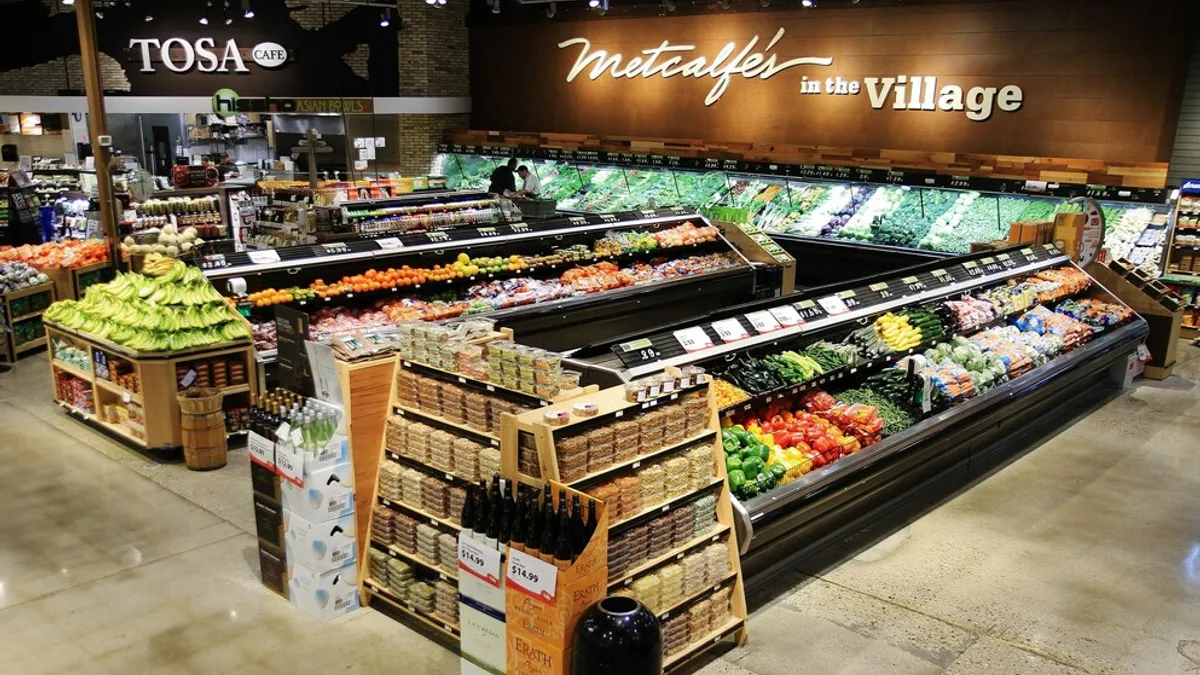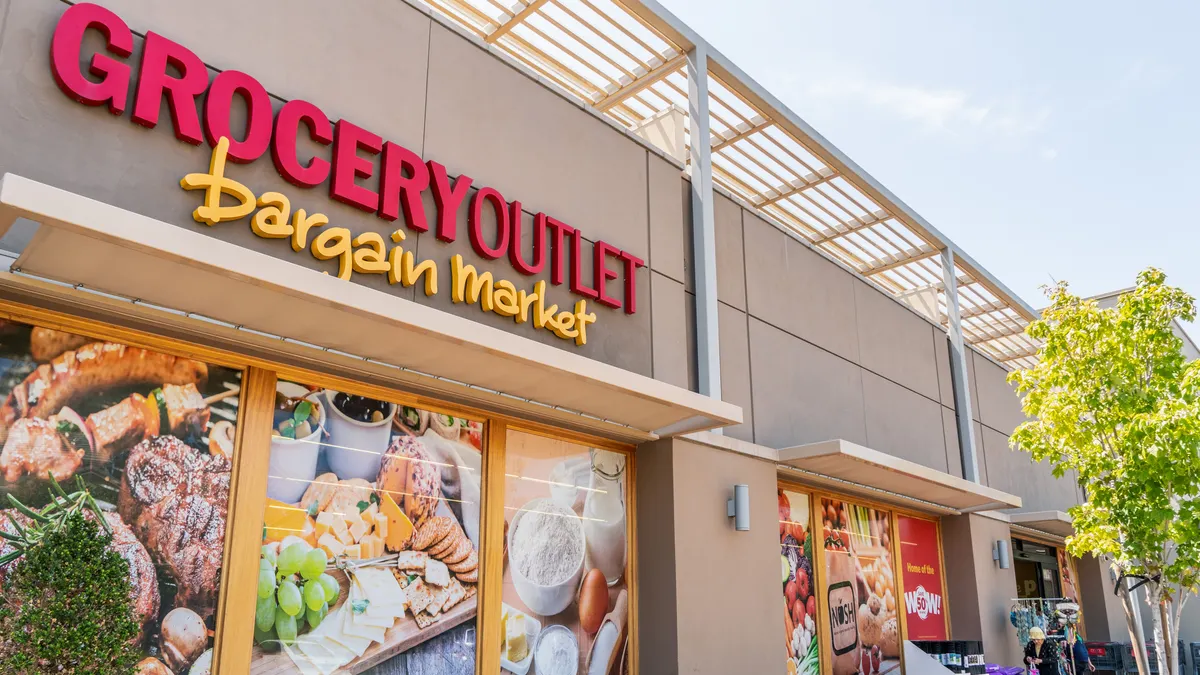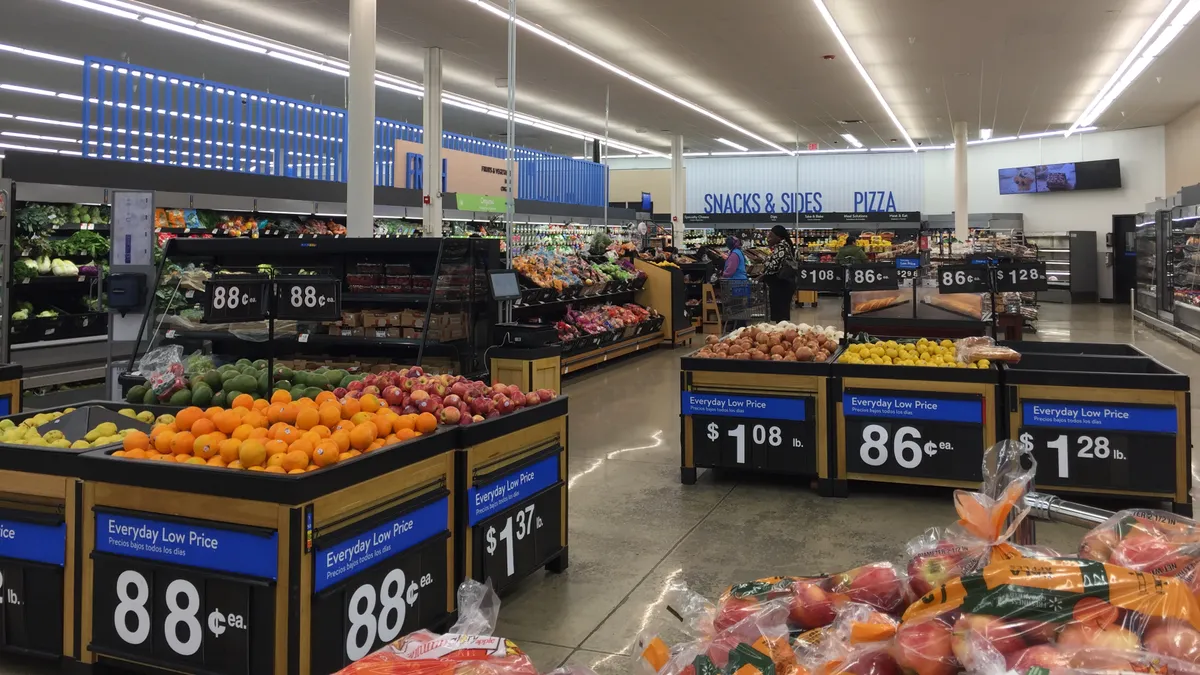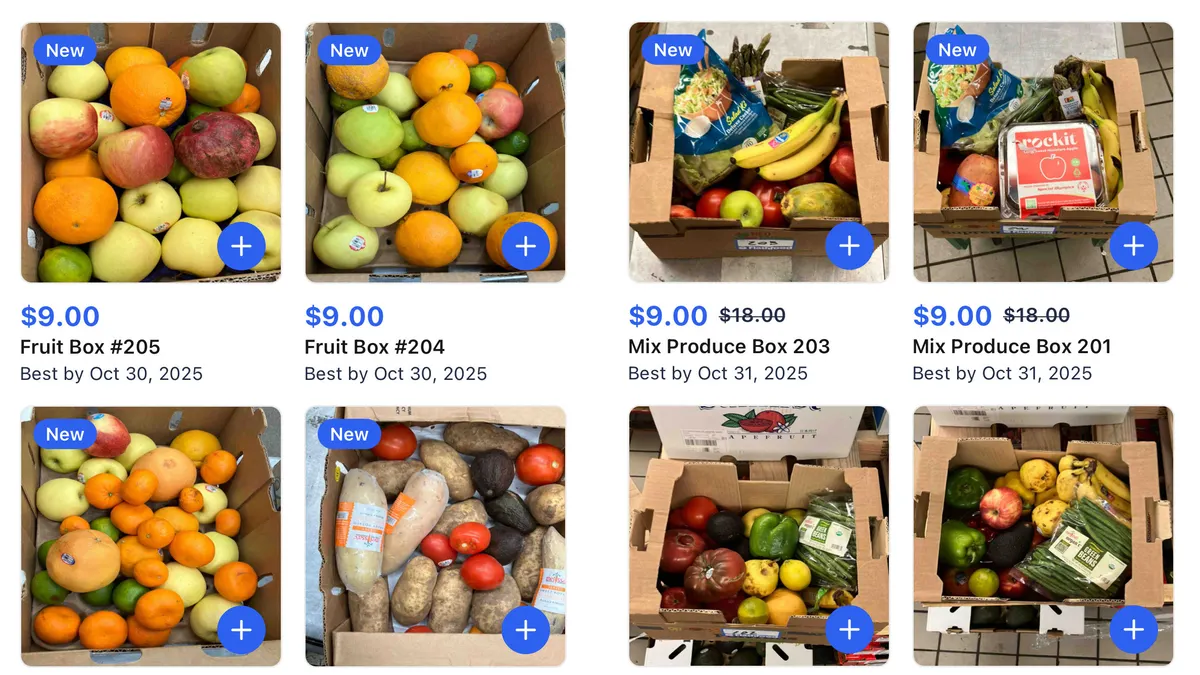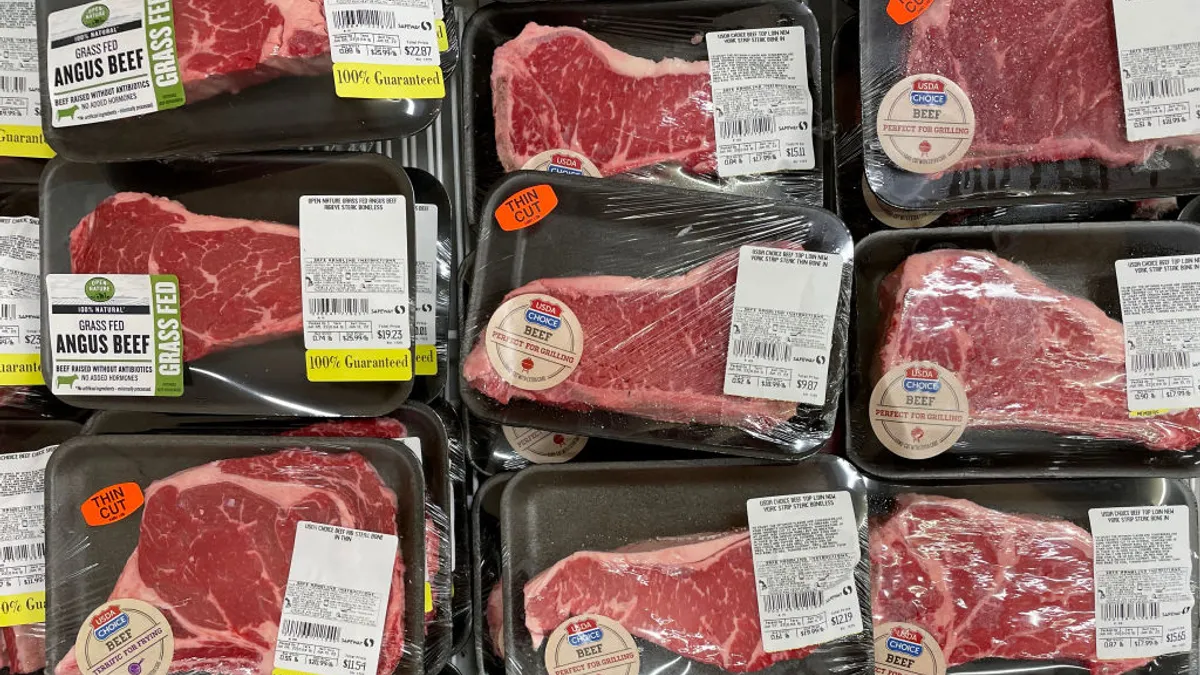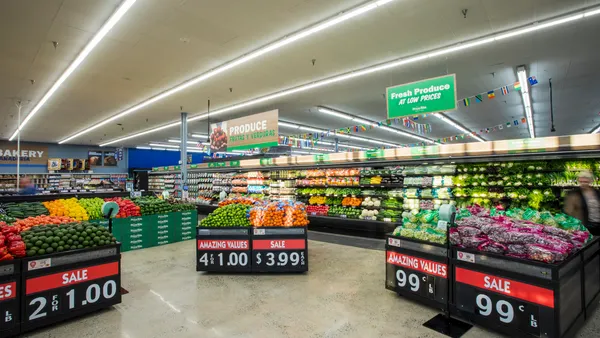Grocers have tried their hand at operating restaurants, eager to add some culinary pizzazz and draw new customers to their stores. But the recipe for success has proven elusive.
Kroger this spring shuttered two of its three Kitchen 1883 restaurants and closed down its ghost kitchens, which served meals to digital shoppers, in 2023. Regional grocers like Bristol Farms and defunct startup Dom’s Kitchen & Market have closed stores that featured elaborate dining concepts, while Hy-Vee has gone back and forth on its restaurant formats over the past few years.
Pair these troubles with their laser focus on efficiency, and grocers’ appetite for opening and running restaurants doesn’t appear to be very robust right now.
But there’s one independent operator that’s bucking this industry narrative. Town & Country Markets, which operates six stores in the Puget Sound region of Washington state, has opened three Field House restaurants over the past year, serving up fresh-made burgers, salads, pizzas, beer and other fare across breakfast, lunch and dinner. Each location averages 3,500 diners per week — well above the 2,600 Town & Country anticipated would show up — President and CEO Ryan Ritter said.
Many of those diners are discovering the retailer for the first time when they visit, and they’re often shopping for groceries when they stop in for a burger and a beer. Town & Country plans to put a Field House in all of its locations over the next two years or so, and Ritter said any new store will have the concept in some form.
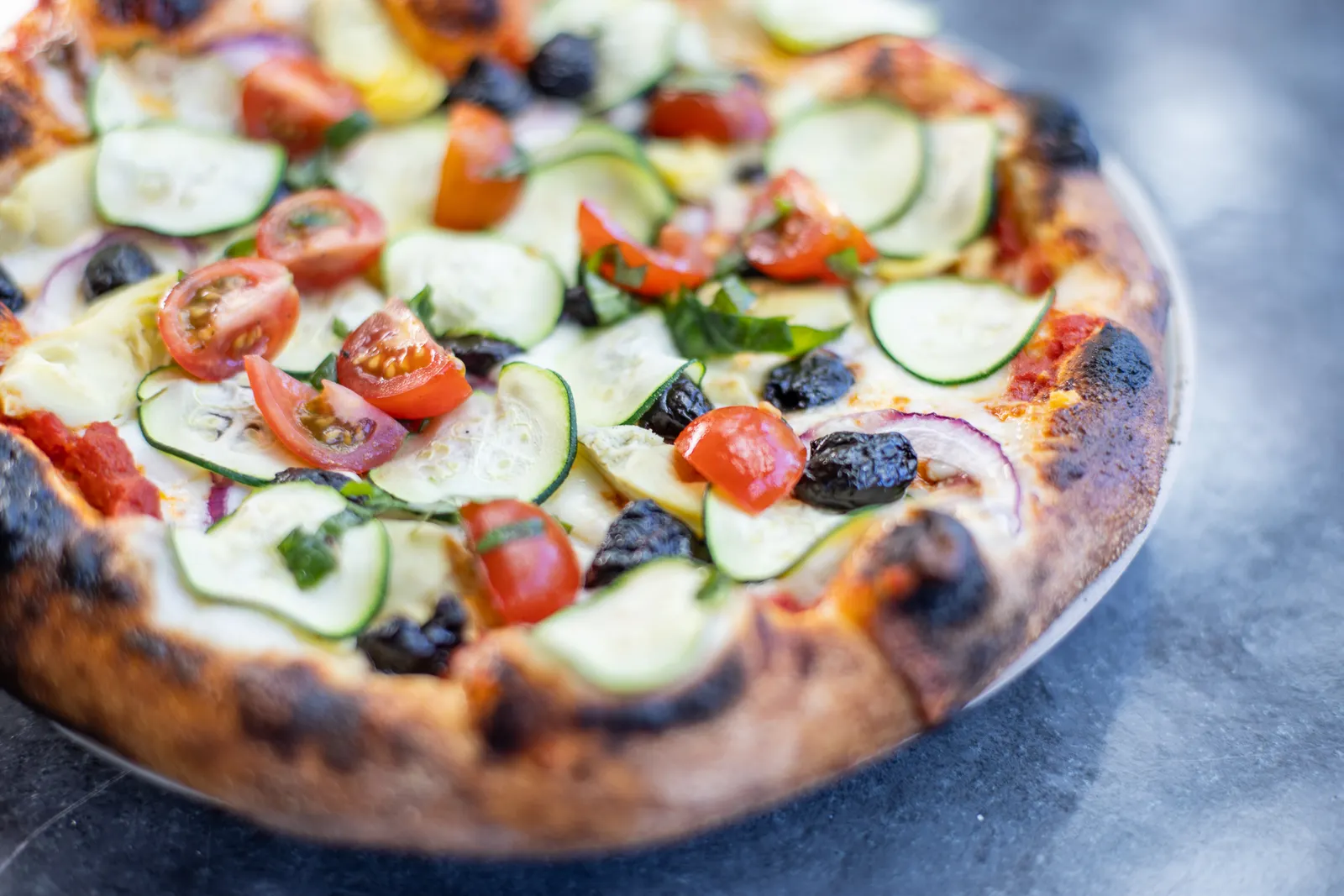
When Town & Country opened its first restaurant, “we had double-digit growth in grocery sales, and that’s continued to grow,” he said. “These are truly additive sales” throughout the store.
What’s Town & Country’s secret? No one thing accounts for Field House’s successful run so far, Ritter explained. Rather, it’s many things — and none of them have been easy to implement, he emphasized.
One move that’s paid off is fully integrating the restaurant concept with Town & Country’s stores. The Field House inside the grocer’s Mill Creek, Washington, location sits right next to the foodservice department and has a spacious seating area that’s available for customers of the restaurant as well as anyone who grabbed a meal from the foodservice or deli departments. The grocer also promotes Field House as a market-to-table restaurant, with all ingredients in the dishes it serves sourced from the store. Seasonal dishes often highlight produce and other items prominently displayed on the retail floor.
“If the asparagus [the store has] is amazing, you’re going to find a pizza with asparagus,” Ritter said. “We recently had asparagus and burrata. And the cashiers are going to talk about it.”
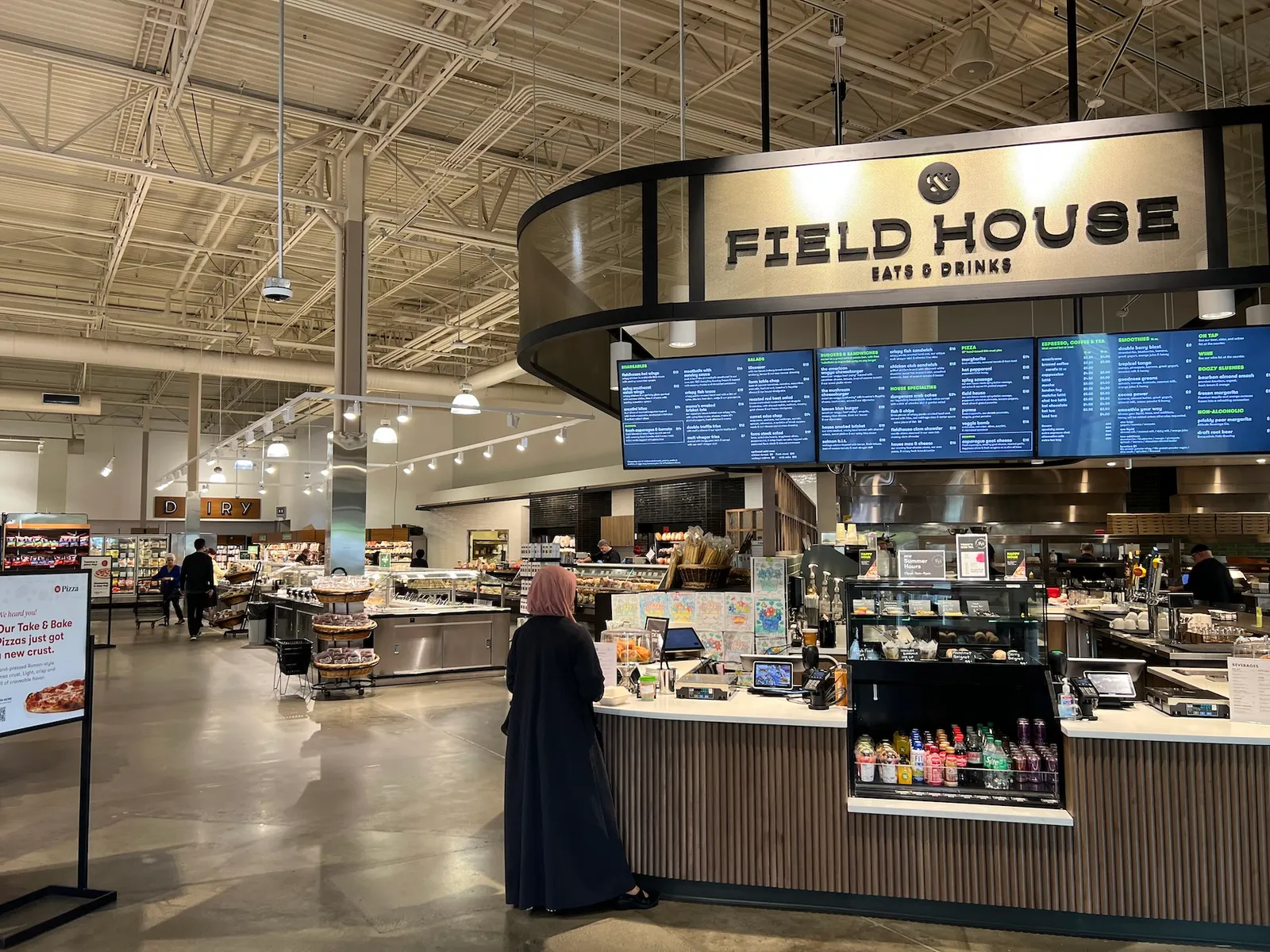
Other grocers have failed with restaurants that were too detached — both physically and conceptually — from the stores where they operated, Ritter noted. In the early stages of developing Field House, he visited other grocers that had opened restaurants and found that many were cafeteria-style establishments that were efficient but uninspiring.
Ritter belongs to a share group with executives from other independent grocers around the U.S., and some who had tried opening restaurants advised him not to do the same.
“They all tried the cafeteria concept. They wanted to make it as simple as possible,” he said. “And I was like, no, no, we’re gonna create a restaurant.”
Town & Country hired a restaurant design firm to design its Field House locations. To make sure its menu was up to snuff, the company enlisted local restaurateur Ethan Stowell as an advisor.
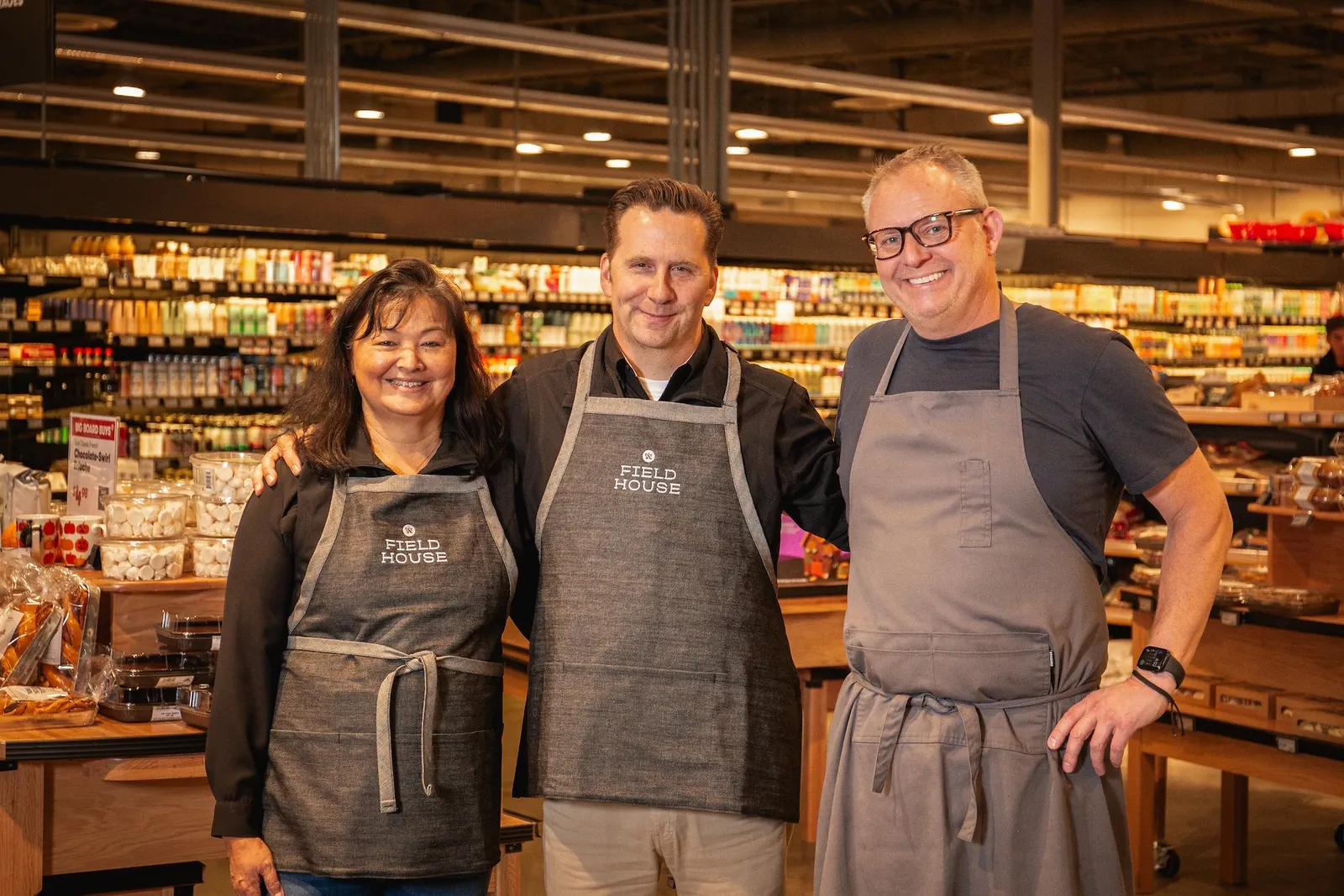
Stowell, whose company operates more than a dozen restaurant concepts, helped develop a variety of familiar dishes that have a slightly upscale flair, including a house smoked brisket sandwich, farro steak salad and Nutella pancakes. He also advised Town & Country on the nuts and bolts of operating a restaurant and allowed Field House’s kitchen staff to tour his restaurants and observe how the back of house operated.
Field House’s connection with Stowell gave the restaurant credibility and attention from the get-go. “We were getting noticed in restaurant publications because Ethan was associated with us,” Ritter said.
Getting the balance of labor right has also been key for Field House. The concept doesn’t have a traditional wait staff — customers order at the main counter and get dishes brought to them — but it does have line cooks, kitchen managers, dishwashers and other core restaurant roles that Ritter says are costly but necessary to create a dining destination.
Running a restaurant is a whole different ballgame from running a grocery store, Ritter said, and it’s taken Town & Country time to get up to speed with the help of professionals like Stowell. Even details like getting the restaurants listed correctly on Google Maps are important, he said.

Town & Country has also had to think differently about how it promotes Field House.
As a traditional grocer, “we’re really good about building weekly ads, but it takes a whole different way of connecting with guests, like really embracing social media,” to make the restaurant concept click, Ritter said.
Ritter’s goal with Field House isn’t to make each restaurant profitable. Rather, he wants the concept to improve the shopping experience by providing another type of meal option that people are looking for.
It’s also an effective way to stand out from other grocery stores.
“I’ve never had the cheapest prices down the aisle. It’s impossible … I can’t buy at the same volume as a Walmart or a Kroger. We have to differentiate ourselves in really creative, unique ways,” Ritter said.
Later this year, members of the grocery share group Ritter belongs to are coming out to pay a visit. After writing off the idea a few years ago, they’re now willing to take another look and see if a restaurant could work in their stores, as well, said Ritter.


